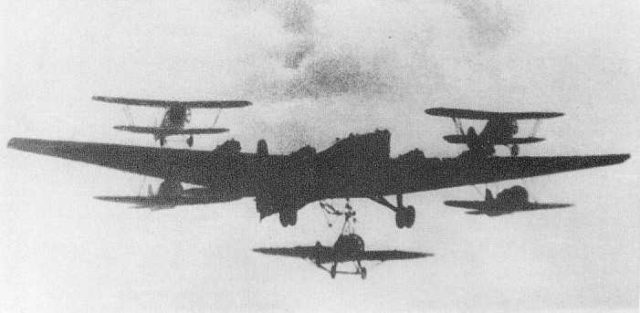
Zveno was a parasite aircraft concept developed in the Soviet Union during the 1930s. It consisted of a Tupolev TB-1 or aTupolev TB-3 heavy bomber acting as a mothership for between two and five fighters. Depending on the Zveno variant, the fighters either launched with the mothership or docked in flight, and they could refuel from the bomber. The definitive Zveno-SPB using a TB-3 and two Polikarpov I-16s, each armed with two 550 lb bombs, was used operationally with good results against strategic targets in Romania during the opening stages of the German-Soviet War. The same squadron afterwards also carried out a tactical attack against a bridge over the River Dnieper that had been captured by advancing German forces.
In June 1931, Vladimir Sergeyevich Vakhmistrov of the scientific test institute of the air force started work on combinations of fighters rigidly attached to heavy bomber aircraft. The system was envisioned to serve several purposes:
